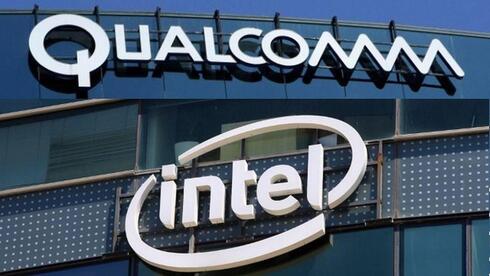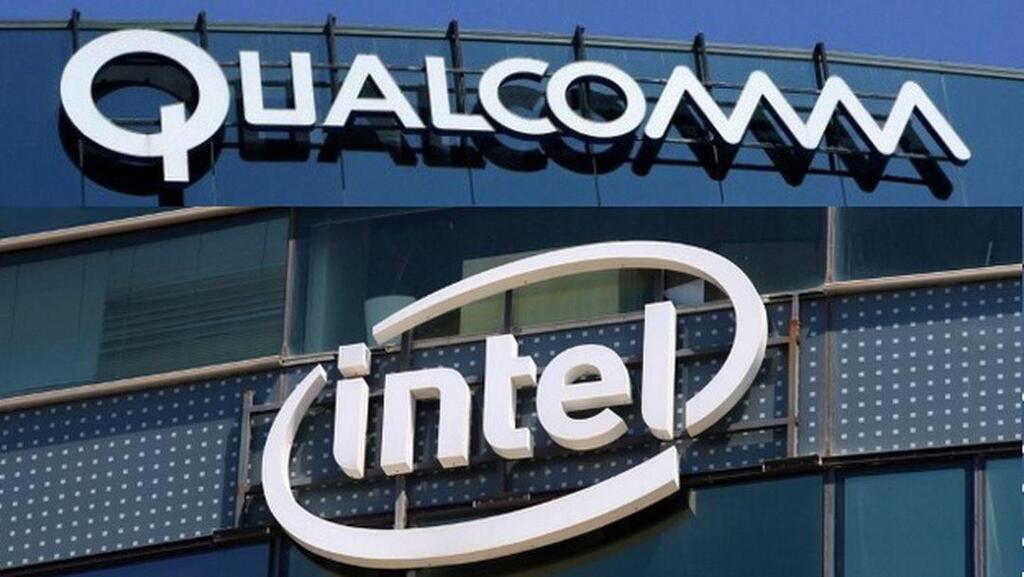
Intel-Qualcomm merger talks: Will this deal reshape the global chip market?
A possible merger could bring new innovation—but faces steep regulatory hurdles.
At first glance, it is unclear what Qualcomm has to gain from acquiring Intel. The "Wall Street Journal" revealed over the weekend that the successful chip giant recently approached the struggling Intel with a takeover proposal that would unite the two rivals into a single chip company. On the surface, this seems like a strange proposition: Qualcomm is one of the big winners of the mobile revolution, with its chips found in almost every device on the market, including Apple’s. Intel, once the world’s largest chip company by market capitalization, is now grappling with crisis after crisis, struggling to turn around its deteriorating situation. Why would Qualcomm want to inherit Intel’s burdens?
However, in practice, this combination has the potential to shake up the industry, creating a whole greater than the sum of its parts. It could optimize and enhance the operations of both companies, possibly creating a competitor capable of challenging Nvidia's monopoly in the AI chip market. Furthermore, it could reinvigorate the Biden administration's efforts to position the U.S. as a global chip manufacturing hub—assuming the companies can overcome the complex challenges that accompany such a massive merger.
According to reports from the "Wall Street Journal" and the "New York Times," the deal is in its very early stages, and Qualcomm has not yet submitted an official offer. Even if Intel accepts and the two companies reach an agreement, there is no certainty the deal will go through. A transaction of this magnitude requires regulatory approval from several countries—a complex and lengthy process that may prove impossible if approval from China is needed. Additionally, it’s unclear which parts of Intel Qualcomm is interested in acquiring: its R&D division alone, or also its foundry operations. Market estimates suggest that regulators, especially in the U.S., may be reluctant to approve such a deal without addressing Intel’s foundry activities.
Qualcomm, with a market value of about $188 billion, may also lack the cash needed to buy Intel, which is valued at around $93 billion. Qualcomm's latest quarterly report, as of June 2024, shows it holds $23.33 billion in assets, not all of which are liquid. According to the "Wall Street Journal," Qualcomm could sell part of its own operations or Intel’s to facilitate the transaction. However, Qualcomm will likely need to raise capital to complete the acquisition. Another possibility is to structure the deal as a stock swap, which would resemble a merger rather than a traditional acquisition.
Qualcomm’s current ability to consider acquiring Intel stems from a series of correct strategic moves and significant achievements. In January 2007, when Steve Jobs unveiled the first iPhone, the companies' fortunes were almost reversed. Intel was the world's largest chipmaker, dominating the PC sector with a market value of about $118 billion, while Qualcomm was a relatively small, specialized chipmaker valued at around $62 billion.
But Qualcomm, younger and hungrier, grasped the significance of the iPhone revolution. It not only improved its communication chips but also rapidly developed processors tailored to mobile devices. Over the years, Qualcomm became the global leader in mobile processors, with its chips powering the top Android devices. Apple, though it designs its own processors, still relies on Qualcomm for its communication chips. Apple’s failed five-year attempt to replace Qualcomm’s chips underscores Qualcomm’s dominance in this area, forcing Apple to renew its contract. In another bold move, Qualcomm recently threatened Intel on its home turf by partnering with Microsoft and leading manufacturers to unveil AI-powered PCs running on Qualcomm chips.
Intel, on the other hand, has taken a different path over the past decade and a half. A series of strategic missteps caused it to miss the mobile revolution, and it has no significant presence in the field today. The company also failed to capitalize on the booming demand for chip manufacturing services, a market it could have dominated given its extensive production infrastructure. Instead, it allowed companies like TSMC to become giants, serving industry titans like Nvidia and Apple. Today, Intel is struggling to close the gap with Nvidia in AI chip production, while CEO Pat Gelsinger's plan to establish a significant foundry business continues to generate losses and remains years away from profitability.
Intel's current difficulties have led to a series of tough decisions in recent weeks. First, the company announced a massive cost-cutting plan, which includes reducing expenses by $10 billion and laying off 15,000 employees—about 15% of its workforce. Additionally, Intel has introduced a multi-faceted efficiency plan, which includes spinning off its foundry business into a subsidiary, halting plans to build factories in Europe and Asia, and reducing its global office footprint by two-thirds.
A potential deal between Qualcomm and Intel could serve as a lifeline for Intel while creating a multidisciplinary chip giant capable of challenging Nvidia’s dominance in AI processors. The two companies have complementary strengths: Qualcomm is the undisputed leader in mobile and communication processors, while Intel dominates PC processors and is strong in servers. Combining their expertise could allow the merged company to offer a broader range of solutions, potentially adapting more quickly to evolving market needs.
The merger could also enable the creation of a more formidable competitor to Nvidia. Currently, Qualcomm develops AI processors primarily for end devices, with no significant presence in data center processors, which are essential for training advanced AI models. Intel has products in this space, but they lack the popularity of Nvidia's offerings. A collaboration between the two companies could lead to the development of AI processors that neither could create on its own, posing a stronger challenge to Nvidia.
Intel’s manufacturing capabilities will play a crucial role in the deal's success. Qualcomm may wish to divest from this costly operation, particularly the planned new plants in the U.S. and Israel, which require tens of billions in investments and years to become profitable. With chip manufacturing central to the U.S. government’s agenda, and $50 billion allocated for new plants, regulators may not approve any deal that jeopardizes these efforts.
Though Qualcomm lacks significant chip manufacturing experience, owning Intel's foundries could offer significant benefits, such as reducing its reliance on external suppliers and streamlining its supply chain. Furthermore, Qualcomm’s deep expertise in ARM architecture—used by Apple, Nvidia, and itself—could complement Intel’s production capabilities and help attract new customers.
If the combined company can master both AI processors and chip manufacturing, it could create a unique and unrivaled chip giant—one that both develops and manufactures AI processors. Such a company could significantly challenge Nvidia’s dominance and ease the global shortage of these critical processors.
However, these potential successes are far from guaranteed. Numerous barriers stand in the way of the merger, and many more challenges could hinder the post-merger integration. Intel and Qualcomm have different organizational cultures and operating methods, and both are enormous entities—Qualcomm employs around 50,000 people, while Intel has twice that number. The integration process would be long and costly, and in the early stages, the complexity of the merger could slow down both companies' development efforts.
Despite the potential benefits, factors like organizational differences, inefficiencies, and managerial or strategic missteps could prevent the merger from realizing its full potential. Instead of creating a nimble industry leader, the merger might produce a cumbersome and ineffective giant.
Both companies have a significant presence in Israel. Intel develops its flagship computer processors there and has substantial production operations, with a commitment to invest $25 billion in expansion. Qualcomm has been active in Israel since 1993, focusing on communication chip development. Over the years, it has made several major acquisitions in Israel, including a deal to acquire Autotalks in 2023 for $350 million which ultimately fell through.
Since the companies' local operations do not overlap, it's likely that, at least initially, the merged company will keep the teams separate, possibly uniting them only for logistical reasons to save on office and overhead costs. The future of Intel’s production operations is more complicated and depends on global-level decisions. If Qualcomm decides to retain Intel’s manufacturing capabilities, the planned expansion in Kiryat Gat could proceed. However, if Qualcomm opts to divest the manufacturing arm, it is unclear whether a potential buyer would have any interest or obligation to maintain the factories in Israel.














